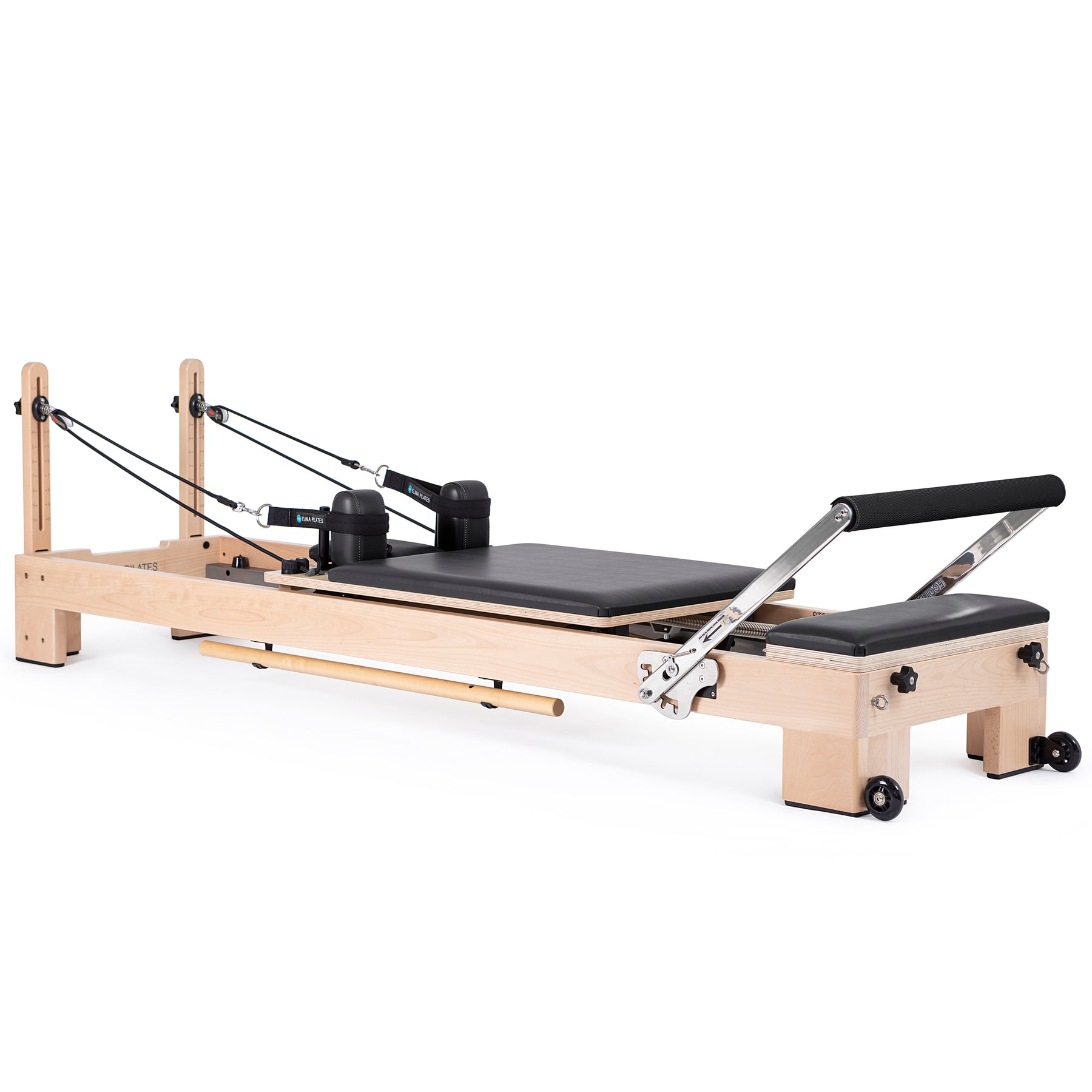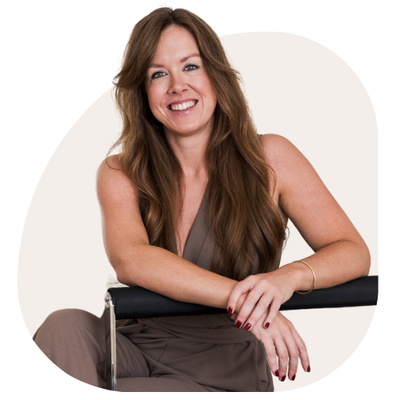As a studio owner or gym owner, you're probably considering investing in professional Pilates equipment. The big question, of course, is: when will you see a return on your investment?
The good news: in a well-run studio, you'll typically recoup the cost of Pilates equipment within 1-3 years . This depends on several factors we'll discuss in this article.
In the Dutch fitness industry, the average payback period is around 2.3 years . For Pilates studios with a smart approach, this can even be within 18 months , while more conservative scenarios sometimes require 5 to 7 years .
How much does professional Pilates equipment cost?
Purchase prices vary considerably depending on the type of equipment and brand. At DePilatesStore.nl, you'll find, for example (all prices include VAT):
Pilates Reformers

- Elina Pilates Lignum Reformer: €2,407
-
Balanced Body Studio Reformer: from €6,961
Price difference depends on material and additional options
Cadillacs

- Elina Pilates Cadillac: from €3,375 standalone
- Balanced Body Cadillac Reformer: approximately €13,829
- Elina Pilates Cadillac + Reformer combo: around €5,000
Pilates Chairs

- Elina Pilates Combo Chair: €1,198
-
Balanced Body Combo Chair: €2,902
More compact and cheaper, ideal for group lessons
Barrels and Accessories

- Ladder Barrel: approximately €1,561
- Pilates Arc: from €246
- Spine Corrector: around €500
For a complete studio setup, you should expect to invest between €20,000 and €50,000 , depending on the number of machines and the brand you choose. A high-end studio with 6 Balanced Body reformers and all accessories can even exceed €50,000.
What factors determine your payback period?
1. Occupancy rate: the most important factor
This is the determining factor for your ROI. A reformer used 20 classes per week will pay for itself much faster than one used 5 times a week. The more you schedule, the faster your investment will pay for itself.
Practical tip: Successful studios maintain a stable class schedule with consistent times. This promotes client retention and ensures optimal use of your equipment.
2. Price per lesson and market segment
Dutch Pilates studios charge different rates:
- Group lessons: €15 – €30 per participant (depending on region)
- Private lessons: €50 – €90 per hour
- Premium locations: up to €35 per group lesson
In smaller towns, rates are often around €15-€20, while in the Randstad, you can charge higher prices. The trick is finding the balance between competitive rates and what your market can bear.
3. Type of lessons and business model
Group lessons are often more profitable than private lessons. With four participants at €25 per lesson, you generate €100 per hour, compared to €60-€80 for a private lesson. Furthermore, group lessons allow you to serve more clients per time slot.
Mixed model: Many successful studios combine group and private lessons. Group lessons provide a steady income, while private lessons offer higher hourly margins.
4. Maintenance and operational costs
Fortunately, Pilates equipment is relatively low-maintenance:
- Annual maintenance costs: €50 – €100 per Reformer
- Replacement parts: springs every 2 years (€350 – €400, depending on number of Reformers), cables and belts as needed
- Service checks: many studios do this themselves, otherwise €200 – €500 per year
These costs are minimal compared to your turnover, but important for safety and customer satisfaction.
5. Location and overhead
Your fixed costs determine how much of your turnover actually goes to earning back:
- Rental costs: often the largest expense item
- Instructor fees: €30 – €50 per lesson
- Insurance and energy: €200 – €500 per month
Studios where the owner teaches themselves can use more revenue to recoup the costs of equipment.
Practical examples: how quickly do you earn back your investment?
| Studio type | Equipment | Investment | Weekly turnover | Net per week* | Payback period |
|---|---|---|---|---|---|
| Small studio | 1 reformer | €5,000 | €300 (5 private lessons) | €200 | ± 6 months |
| Medium-sized studio | 4 reformers | €20,000 | €800 (8 group lessons) | €500 | ± 10 months |
| Large studio | 8 reformers | €40,000 | €1,320 (10 group lessons) | €850 | ± 12 months |
| Premium studio | 6 reformers + cadillac | €45,000 | €1,500 (mix premium lessons) | €900 | ± 12 months |
| *Net = after instructor costs, but before rent and other fixed costs | |||||
Tips for a faster payback period
-
Choose the right equipment
Invest in quality brands like Balanced Body , Elina Pilates , or Body & Exercise . These will last 15 to 20 years and attract more customers. -
Start smart and expand
Start with 2-3 reformers and expand as your customer base grows. This limits your initial risk and allows you to learn what works in your market. -
Optimize your planning
Peak hours: plan popular times with group classes
Off-peak: use for private lessons or workshops
Seasonal planning: January/September are peak months for new customers -
Focus on customer loyalty
Introductory packages: entice new customers to stay
Loyalty programs: encourage regular visits
Community building: organize events and workshops -
Diversify your offering
Teacher training: additional income stream
Workshops and retreats: higher margins
Online classes: reach more customers without additional equipment
The long-term investment
Remember that high-quality Pilates equipment lasts 15-20 years . After the payback period (2-3 years on average), you'll still have 12-17 years of pure profit. This makes Pilates equipment an attractive long-term investment.
Residual value
Professional Pilates equipment retains its value. Pre-owned reformers from top brands still sell for 50-70% of their original price, which reduces your net investment.
Depreciation
For accounting purposes, you can depreciate Pilates equipment over 5 – 10 years, although its actual lifespan is much longer.
Conclusion
With the right approach and sufficient clients, Pilates equipment is an excellent investment for your studio or gym. The key lies in finding the right balance between investment and utilization. Start with a solid business plan, choose quality equipment from reliable suppliers like DePilatesStore.nl , and focus on customer retention and optimal utilization.
At The Pilates Store, we're happy to help you make the right choice for your situation. Whether you're starting with a single reformer or setting up a complete studio, we'll help you find the best investment for your business model.
FAQ
How long does it take on average to pay for Pilates equipment?
For a well-run studio, this typically takes 1-3 years. This depends on your occupancy rate, rates, and the type of classes you take. Top studios achieve this within 18 months, while conservative scenarios can take 5+ years.
Which Pilates equipment pays for itself the quickest?
Reformers for group classes usually pay for themselves the fastest. You can serve 4-6 clients simultaneously for €20-30 per person. That generates more revenue per hour than expensive equipment like a Cadillac.
What are the main costs after purchase?
Maintenance costs are limited: around €300-400 per year for replacement parts like springs and cables. Much more important are your fixed costs like rent, instructor fees, and insurance.
Is it better to buy cheap or expensive equipment?
Invest in quality brands like Balanced Body or Elina Pilates. More expensive equipment lasts longer (15-20 years), attracts more customers, and performs better. The extra investment will pay for itself.
How many lessons do I need to teach per week to break even?
This depends on your investment and rates. A rule of thumb: with one reformer (€5,000), you'll need about 5 private lessons per week at €60, or 8 group lessons at €25 per participant (4 participants) to recoup the investment within a year.






